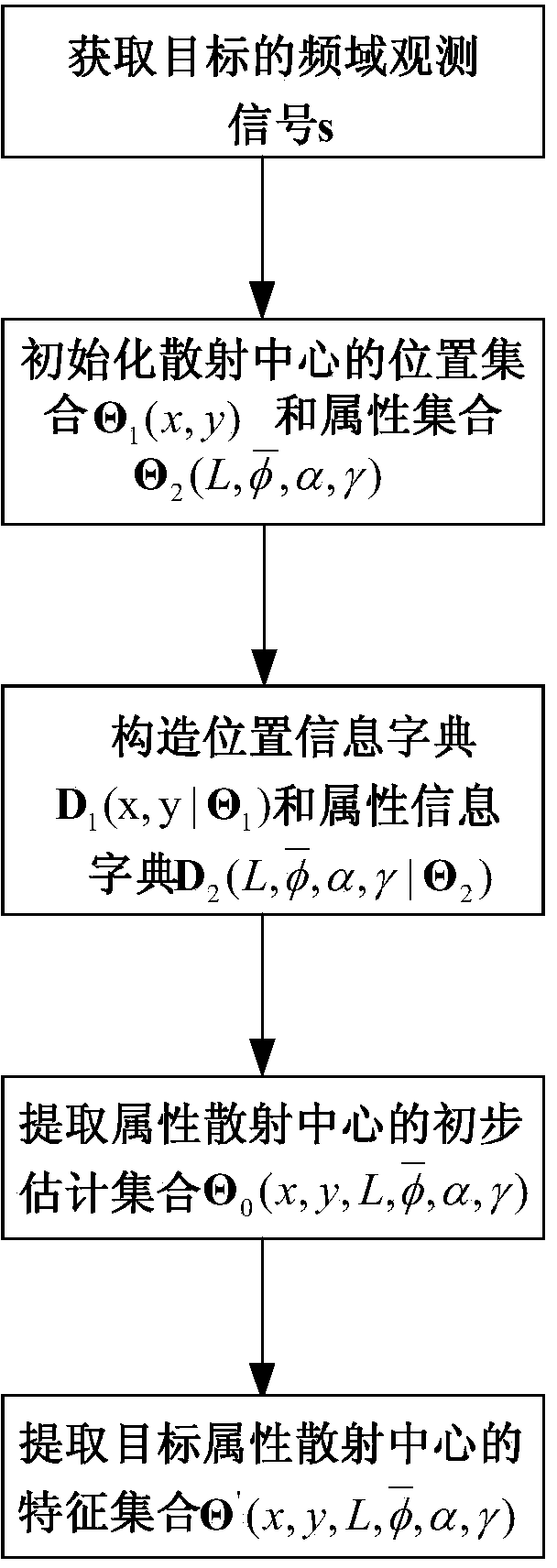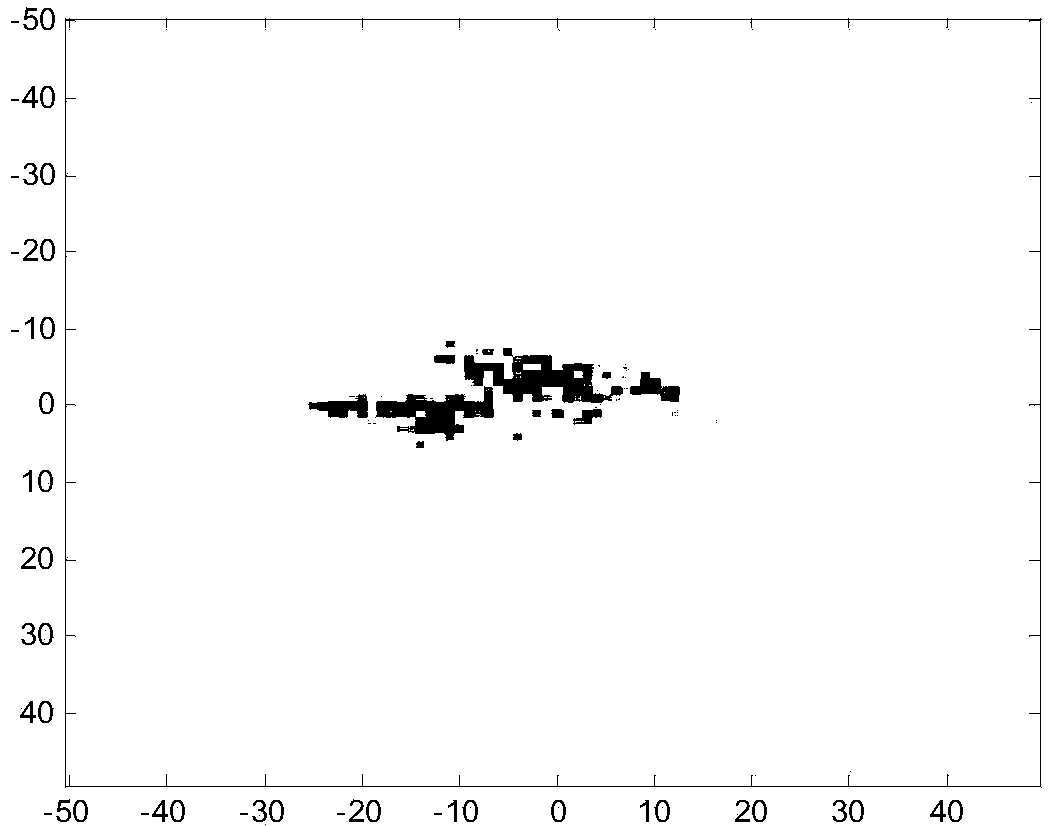Target scattering center extraction method by combining image segmentation with subspace matching pursuit
A technology of matching tracking and target scattering, applied in the field of radar, which can solve the problems of model mismatch, wrong classification of scattering centers, and large coupling between scattering centers.
- Summary
- Abstract
- Description
- Claims
- Application Information
AI Technical Summary
Problems solved by technology
Method used
Image
Examples
Embodiment Construction
[0052] 1. Technical principles
[0053] A high-resolution SAR image is a two-dimensional scattering image of a target, which can be approximated as the sum of backscatter echoes from a small number of strong scattering centers. At present, there are three main models for extracting target scattering centers: ideal point scattering center model, attenuation index model, and attribute scattering center model. Among them, the attribute scattering center model is the most suitable for the scattering characteristics of SAR targets. It not only describes the location information and intensity information of the scattering center, but also describes the geometric size of the scattering center, as well as the dependence of the scattering center on frequency and azimuth, and can be reflected from this. The geometry of the performance target. Compared with the point scattering model and the decay index model, the attribute scattering center model contains more abundant features that ca...
PUM
 Login to View More
Login to View More Abstract
Description
Claims
Application Information
 Login to View More
Login to View More - R&D
- Intellectual Property
- Life Sciences
- Materials
- Tech Scout
- Unparalleled Data Quality
- Higher Quality Content
- 60% Fewer Hallucinations
Browse by: Latest US Patents, China's latest patents, Technical Efficacy Thesaurus, Application Domain, Technology Topic, Popular Technical Reports.
© 2025 PatSnap. All rights reserved.Legal|Privacy policy|Modern Slavery Act Transparency Statement|Sitemap|About US| Contact US: help@patsnap.com



